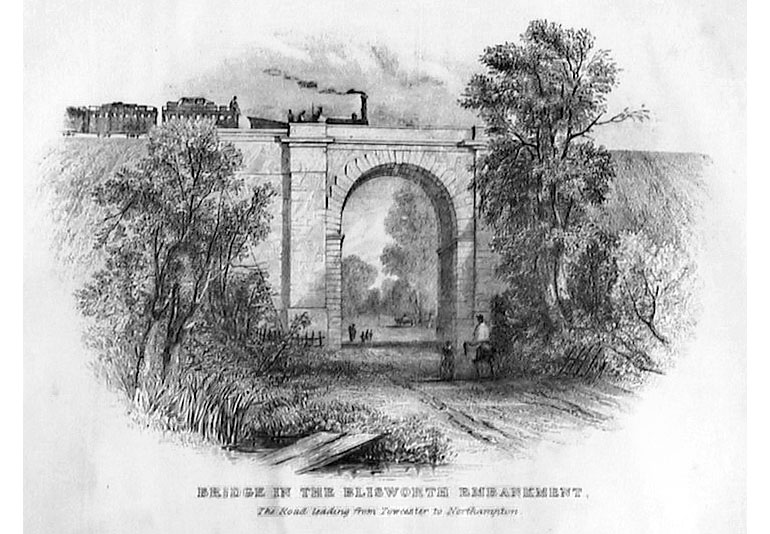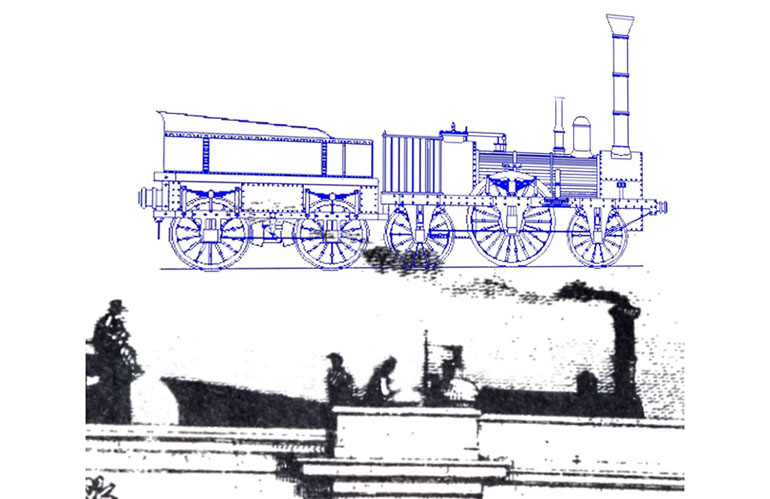|
The Railway Arch & Grafton Villas , Blisworth, Northamptonshire, UK. All pictures are presented at relatively low resolution. There will be hundreds of pictures on this site - there is an economic limit to the webspace available. The point of this presentation is that you can see for yourself the extent of the collection and return later as the collection expands - as it surely will. Any interest in copies of a picture at a higher resolution (ie. clarity) should be directed through contacts given in the Blisworth "Round and About" parish council publication or using the comment form on the home page. In some cases the pictures are not available due to copyright restrictions. However, permission has been obtained, where possible, to include them here. Printed below each image is the photographer's name, if known. |
|
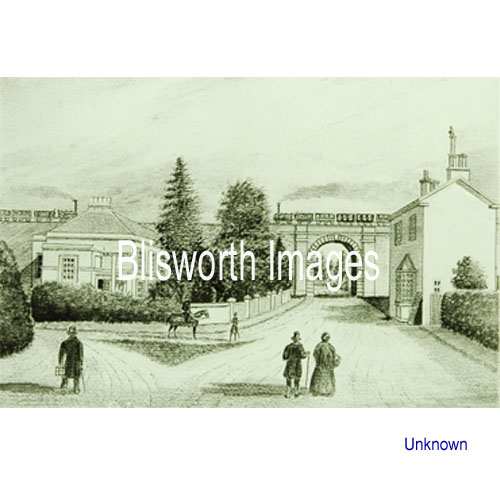 |
26-01 An unsigned drawing by an unknown artist, date around 1850. The building on the right is the turnpike toll-house. That on the left is the twin-villa Grafton Villas (see below). Some other drawings include gates across the main road and even gates across the lane on the left leading to the station (Station Road). This picture may still be in copyright if the artist is known. GF has said that it is by George Clarke (1845) and he first generated a sketch with all the gates included; not substantiated because the Clarke drawings of this scene are missing at the NRO. There is a 1838 map of this area in the Railways section. |
| The style of the locomotives in the c1850 picture above (post Grafton Villas) does not seem consistent with that of the locomotive in the 1839 engraving below for which there is support in the existence of the Stephenson "Alder". What seems to have happened is that George Clarke made a sketch 'on location' and added what seemed to be reasonable representations of period locomotives later. Perhaps these, above, were the commuter trains of the 1850s whilst Alder-like machines, below, were the 'through-expresses'. Can anyone comment? | |
|
|
|
|
The above picture is an engraving, scribed on a steel plate of size only 105x145mm. It is by Charles Tilt (1839) for the 1839 publication by Thomas Roscoe entitled "The London and Birmingham Railway". This print was provided by Heaton's of Tilsbury, an antiquarian dealer specialising in art works. The dating of a photocopied version (by GF) was doubted at first because the style of the locomotive seemed to belong to a later period. However, Stephenson's designs marched forward faster than assumed. He built in Newcastle a variety of marques for the German market, for example the Adler (1834), Jupiter (1837), Pegasus and Hercules (1838), and again an Adler (1838). The internet has furnished a drawing of an Alder (1835) drawn by Gordon Best in 2001 (http://steamcad.railfan.net/adler.htm). An enlargement of Tilt's engraving is presented below, taken from the photocopy image, with the drawing of the Adler superimposed. It may well not be an Adler on the rail bridge c1839 but the comparison with the drawing demonstrates that a Stephenson's style matches the dating. Another suggestion is that the loco is 'Lion' (1839) but the shape of the tender is too square.
A ghost of the Tilt image is used as a
background in many of the archive picture pages. Use of |
|
|
|
|
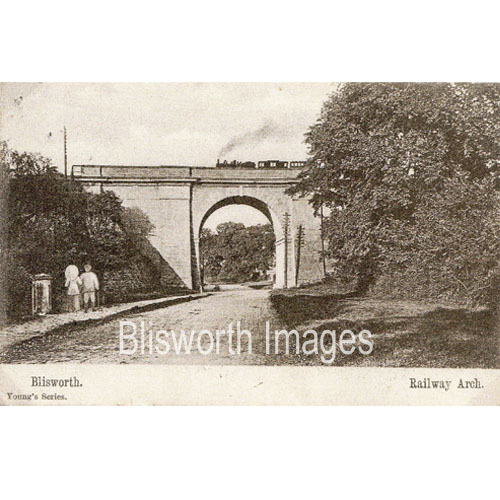 |
An example of loco design on a 1905 postcard. The loco could date from 1895 or even earlier, of course. |
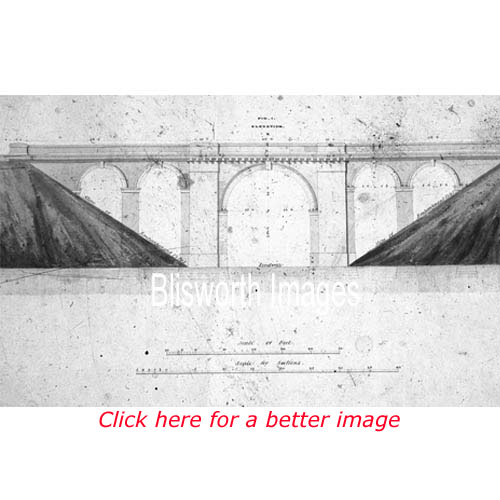 |
26-07 The design above is
thought to be by Stephenson Jnr. The design shown here is an
alternative which was not adopted - by designer unknown. One anecdote is that Dunkley, the builder of the arch, once said - to paraphrase - "I build such things to a sturdy design" and thus seems to lay claim to the design. This quote, frequently used by GF, must be found! |
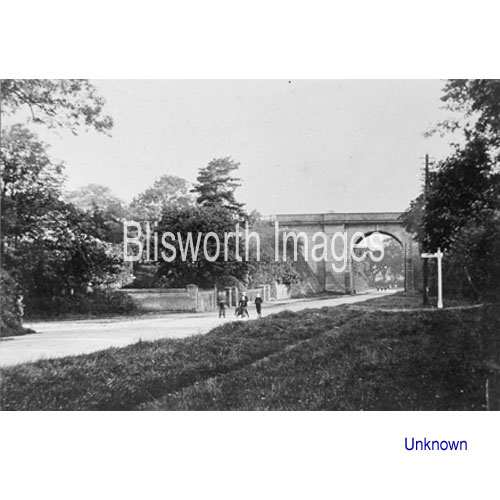 |
26-03 Thought to be dated 1900 -1910
judging from the appearance of the clothing and the telegraph
pole. A feature of the railway embankment is that it was, at the
outset, planted with a great variety of tree species and some have
wondered whether it was an 'alphabetic plantation'. Some survive
today and certainly the wooded appearance behind the Grafton villas is
clear. The recorded reason for so many trees was to stabilised the
embankment. See the
annexed picture of pile work in winter 2005/6 to stabilise the bank
once so many trees had been 'tidied' away. Of the villas, in c. 1830, "I have chosen the site and set out the double cottage this morning, it will have a lodge-like effect and be an ornamental adjunct to the archway as well as show off our stone to the best advantage" - in a letter between Grafton staff members, the underlining is theirs. The stone referred to is that from the Blisworth Stone Works, Stoke Road. |
|
Footnote: From reading the Parish Council minutes, it is known that a new lamp-post with an oil light was placed to the right of the children in late 1902 and the sign-post was put there in 1899. |
|
| 26-03a Another picture from pre-WWI times to show that the action of walking in the centre of the road was customary. | |
|
The reverse side of a 1912 postcard of the arch. Another card from 1927 has been found which complains, "I can tell you it is quiet here. I don't think the place wakes up from one year's end to another". |
|
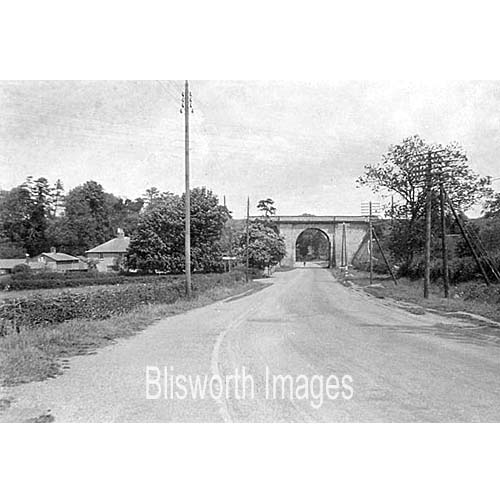 |
26-05a The Northampton road and railway arch in 1931. Note the scruffy edges to the road, the telephone and power poles and the elms along the road beyond the arch. |
| 26-13 Another view from the north side taken about 1910. | |
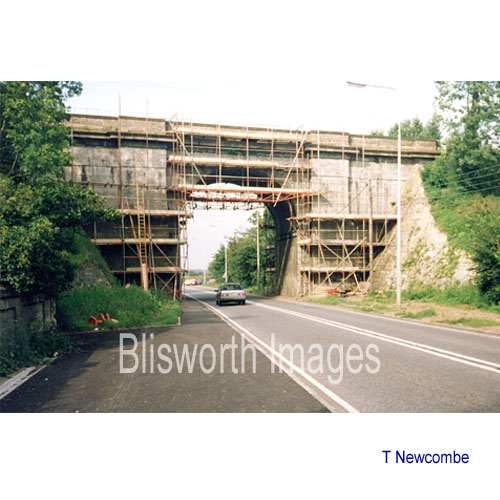 |
26-05 In 1992 the railway arch required repointing and some treatment with pressurised grout behind the stonework. The reason was "old age" and the need to cope with the shock of ever faster trains. |
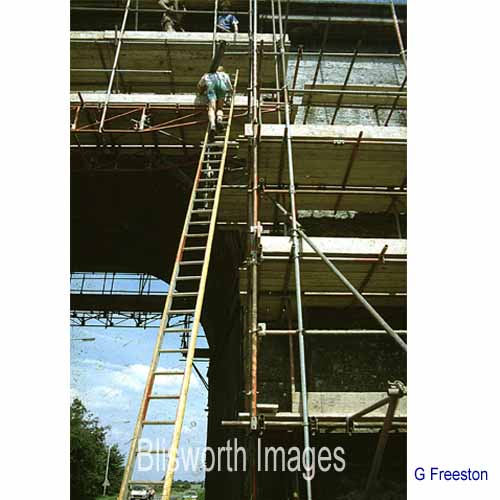 |
26-06 Quite a fitness challenge! |
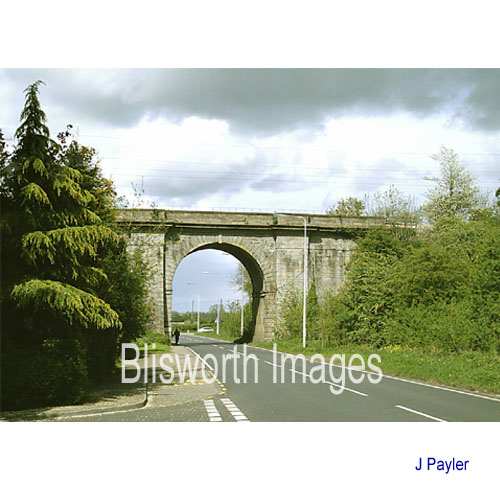 |
26-04 A recent picture of the railway arch. |
|
26-10 The southerly half of the twin-villa, Grafton Villas. The northerly half housed the village doctor from about 1850 - hence this area was once known as the Doctor's Corner. Both villas are listed buildings. George Freeston's list of all doctors, as recorded in Kelly's, is available on this website - in the reference list section. See also the piece about the consulting room behind the villa.
|
|
| 26-11 Similar image to that above. | |
| 26-12 Date 1987. The northerly half of the twin-villa. | |
